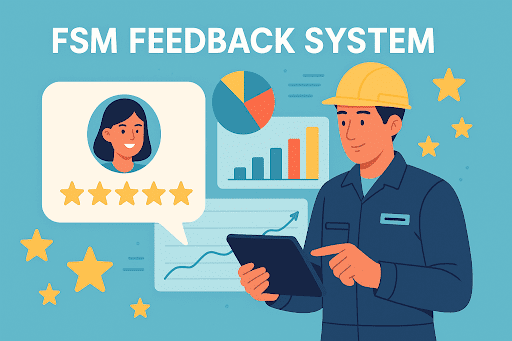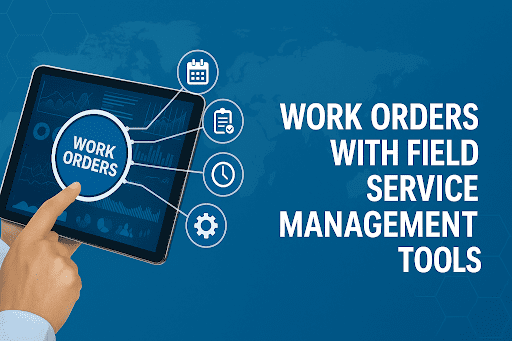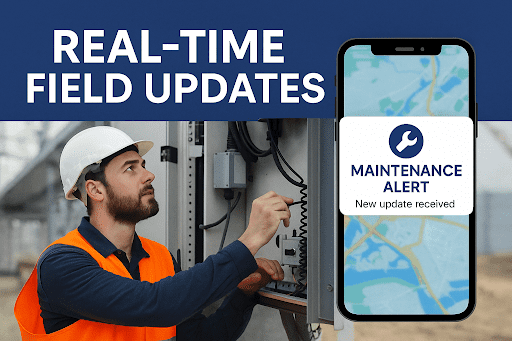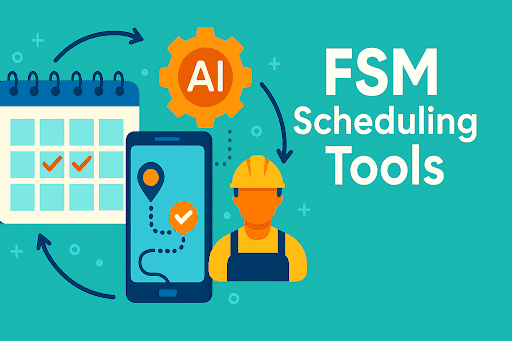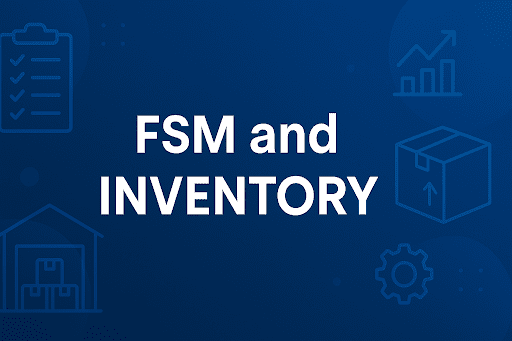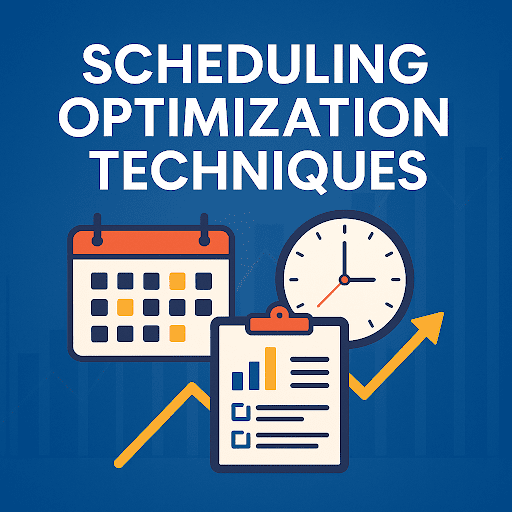 BACK TO Blog
BACK TO Blog
Asset Rental Management
Field Service
The C-Suite Perspective: Why Route Optimization Deserves Boardroom Attention In field service organizations, the conversation around route optimization often begins with efficiency but for executives, it must end with value creation. Every mile traveled without purpose, every minute lost in inefficient dispatching, silently chips away at profit margins, employee morale,
- June 04, 2025
- DreamzCMMS Team
- 7 minutes read
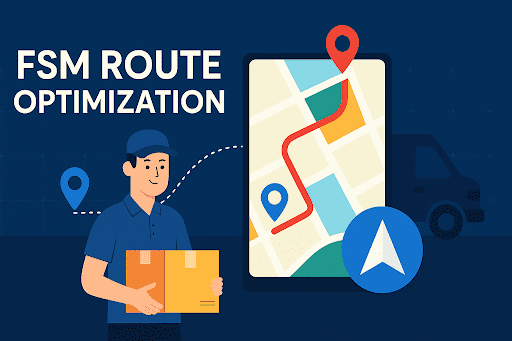
- June 04, 2025
- DreamzCMMS Team
- 7 minutes read
The C-Suite Perspective: Why Route Optimization Deserves Boardroom Attention
In field service organizations, the conversation around route optimization often begins with efficiency but for executives, it must end with value creation. Every mile traveled without purpose, every minute lost in inefficient dispatching, silently chips away at profit margins, employee morale, and customer satisfaction.
This is no longer a back-office issue. FSM route optimization is now a strategic lever. When optimized correctly, it drives measurable reductions in fuel consumption, technician idle time, and response delays. It directly supports enterprise goals like cost control, scalability, and service consistency.
What often goes unnoticed is the complexity behind routing decisions. Without intelligent field service routing software, managers are forced to plan manually balancing technician availability, traffic conditions, job priority, and geography with limited tools. The result? Lost time, rising expenses, and misaligned service windows.
Executives need to shift the narrative. This is not about shaving seconds off delivery times, it is about enabling real-time operational clarity and optimizing how service assets are deployed across the map.
Solutions like Field Service Management Software offer dynamic tools that turn routing from a logistical burden into a business advantage. They make it possible to align workforce movement with strategic intent improving outcomes without increasing headcount.
In an era where customer expectations are rising and operational agility is non-negotiable, route planning in field service management becomes more than a process. It becomes a differentiator.
Keeping Routes Smart: Staying Ahead in the Field
When technicians hit the road, their time needs to count. A small delay, a missed update, or a traffic jam can throw off the entire day. That is why many service leaders are focusing on live, responsive routing.
With real-time route updates for field teams, organizations stay one step ahead. Technicians receive current directions, allowing them to avoid trouble spots and adjust without confusion. The result is fewer delays and more time spent helping customers.
This type of flexibility is not just about saving minutes. It helps teams stay focused and confident, knowing their schedule reflects what is really happening out there. And for managers, it provides a better way to guide the day’s work.
Using dependable field service routing software, offices and field staff stay aligned. When a high-priority job appears or a route needs a shift, updates happen quickly without missed calls or wasted trips.
Some companies also connect these systems with Field Sales Software. It makes coordination even easier, blending service and sales into a shared path forward.
When everyone sees the same plan and that plan can change with the day service becomes more reliable, more efficient, and far more strategic.
Lowering the Miles, Raising the Value
Every extra mile a service vehicle travels adds to fuel costs. Multiply that by dozens or even hundreds of jobs each day, and the numbers climb fast. While this seems like a routine part of operations, it is often one of the biggest areas where savings are hiding in plain sight.
Leaders who focus on reducing fuel and travel time in FSM are not just cutting costs they are building smarter, leaner systems that scale with fewer surprises. With tighter routes and better timing, vehicles spend less time on the road and more time where it counts.
This is where FSM route optimization proves its value. By analyzing location data, technician availability, and job priority, route planners can build schedules that reduce overlap, avoid backtracking, and make the best use of time.
The impact goes beyond fuel. Fewer miles mean less wear on vehicles, fewer emissions, and lower maintenance over time. That adds up to meaningful improvements in both operating budgets and environmental goals.
Smart systems often rely on GPS-based route optimization, helping field teams stick to efficient paths even when plans change. With this approach, routes adapt to real-world conditions without confusion or wasted effort.
Tools like Facility Management Software also play a role, especially when field operations support multiple locations. These platforms help centralize data and allow route decisions to reflect the full picture.
In short, fewer miles lead to more value and a better way of working.
Is Your Field Strategy Built for Today’s Demands?Modern service environments are fast-moving and unpredictable. Without the right systems, even the most experienced teams struggle to stay efficient. If your operations still rely on manual routing or outdated maps, your business could be missing key opportunities for cost savings and better service. Learn how smart tools drive measurable results. Check out Field Service Management Tools to see what forward-thinking companies are using to stay ahead. Schedule a demo today. |
Aligning Schedules with Smarter Service
A technician’s time is valuable. When schedules are scattered or built without considering distance, much of that time is lost in transit rather than spent on meaningful work. Over the course of a week, that adds up both in hours and in missed opportunities.
Location-based task scheduling helps solve this by grouping assignments near each other. It reduces time on the road, increases the number of jobs completed per day, and keeps teams focused. Work becomes smoother, less rushed, and far more predictable.
For company leaders, this shift matters. When routes are smarter, performance improves. You can track how much time is spent traveling, how often jobs are rescheduled, and where delays tend to occur. This visibility makes room for better planning and stronger decisions.
With optimized technician dispatching, it is not just about sending someone quickly it is about sending the right person at the right time. Fewer repeat visits, faster resolution, and greater reliability all flow from thoughtful dispatching.
Some teams enhance this by linking their schedules with Asset Maintenance Management Software. It brings context to every task. Technicians know what they are walking into, and dispatchers can see how service fits within asset life cycles.
When every visit is scheduled with care, the customer feels it. Expectations are met. Service becomes consistent. And that, in turn, builds trust one visit at a time.
Final Thought: Turning Routes Into Results
Every service call is a chance to build value. But without a clear plan for how field teams move, even the best people and tools fall short. FSM route optimization is more than a scheduling upgrade; it is a shift in how service organizations think, plan, and grow.
From travel time reduction strategies to dynamic routing for service calls, smart field operations rely on precision. When routes are optimized, costs go down, productivity rises, and customers feel the difference.
This is not just about technology. It is about aligning people, systems, and goals around a shared purpose. Whether you are managing a local fleet or scaling a national service network, the tools you choose will shape the outcomes you deliver.
Platforms like DreamzCMMS bring all of this together routing, asset history, technician management, and performance tracking. When integrated with Field Service Management Software, it becomes easier to lead with data, act with speed, and grow with consistency.
Additional Reads for Service LeadersContinue exploring how to elevate your field operations with targeted insights:
|
Optimize Every MileIs your field service strategy still limited by manual planning or outdated tools? Now is the time to explore smarter ways to manage routes, technicians, and results. See how DreamzCMMS supports field service teams through clarity, control, and real-time performance. Book your Free Demo today and discover what your team can do with the right system in place. |
Ready for More?
Talk to one of our CMMS experts and see how DreamzCMMS can simplify your maintenance operations.
Book a free consultation








